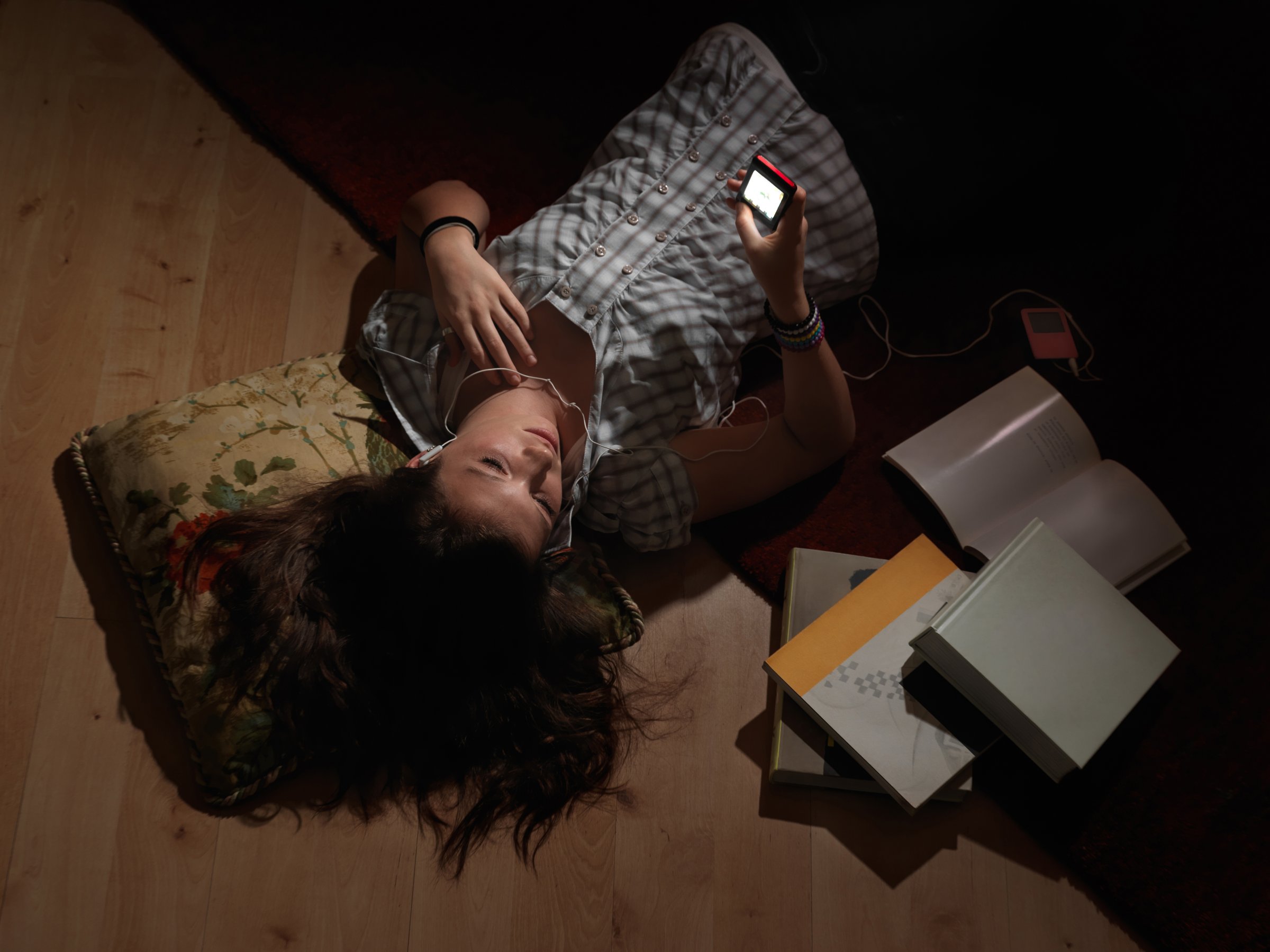
Up to a third of teens in the U.S. don’t get enough sleep each night, and the loss of shut-eye negatively impacts their grades, mental well-being and physical health. Biologically, adolescents need fewer hours of slumber than kids — but there’s a bigger reason for teens’ sleep loss, according to a new study in the journal Pediatrics.
MORE: The Power of Sleep
Katherine Keyes, an assistant professor of epidemiology at Columbia University, looked at survey data from more than 270,000 eighth-, 10th- and 12th-grade students at 130 public and private schools across the country, gathered between 1991 and 2010. Each student was asked two questions about his or her sleep habits: how often they slept for at least seven hours a night, and how often they slept less than they should.
MORE: School Should Start Later So Teens Can Sleep, Urge Doctors
She found that over the 20-year study period, adolescents got less and less sleep. Part of that had to do with the fact that biologically, teens sleep less the older they get, but Keyes and her team also teased apart a period effect — meaning there were forces affecting all the students, at every age, that contributed to their sleeping fewer hours. This led to a marked drop in the average number of adolescents reporting at least seven hours of sleep nightly between 1991–1995 and 1996–2000.
That surprised Keyes, who expected to find sharper declines in sleep in more recent years with the proliferation of cell phones, tablets and social media. “I thought we would see decreases in sleep in more recent years, because so much has been written about teens being at risk with technologies that adversely affect the sleep health of this population,” she says. “But that’s not what we found.”
MORE: Here’s How Much Experts Think You Should Sleep Every Night
Instead, the rises in the mid-1990s corresponded with another widespread trend affecting most teens — the growth of childhood obesity. Obesity has been tied to health disturbances including sleep changes like sleep apnea, and “the decreases in sleep particularly in the 1990s across all ages corresponds to a time period when we also saw increases in pediatric obesity across all ages,” says Keyes. Since then, the sleep patterns haven’t worsened, but they haven’t improved either, which is concerning given the impact that long-term sleep disturbances can have on overall health.
Keyes also uncovered another worrying trend. Students in lower-income families and those belonging to racial and ethnic minorities were more likely to report getting fewer than seven hours of sleep regularly than white teens in higher-income households. But they also said they were getting enough sleep, revealing a failure of public-health messages to adequately inform all adolescent groups about how much sleep they need: about nine hours a night.
“When we first started looking at that data, I kept saying it had to be wrong,” says Keyes. “We were seeing completely opposite patterns. So our results show that health literacy around sleep are not only critical but that those messages are not adapted universally, especially not among higher-risk groups.”
More Must-Reads from TIME
- How Donald Trump Won
- The Best Inventions of 2024
- Why Sleep Is the Key to Living Longer
- Robert Zemeckis Just Wants to Move You
- How to Break 8 Toxic Communication Habits
- Nicola Coughlan Bet on Herself—And Won
- Why Vinegar Is So Good for You
- Meet TIME's Newest Class of Next Generation Leaders
Contact us at letters@time.com